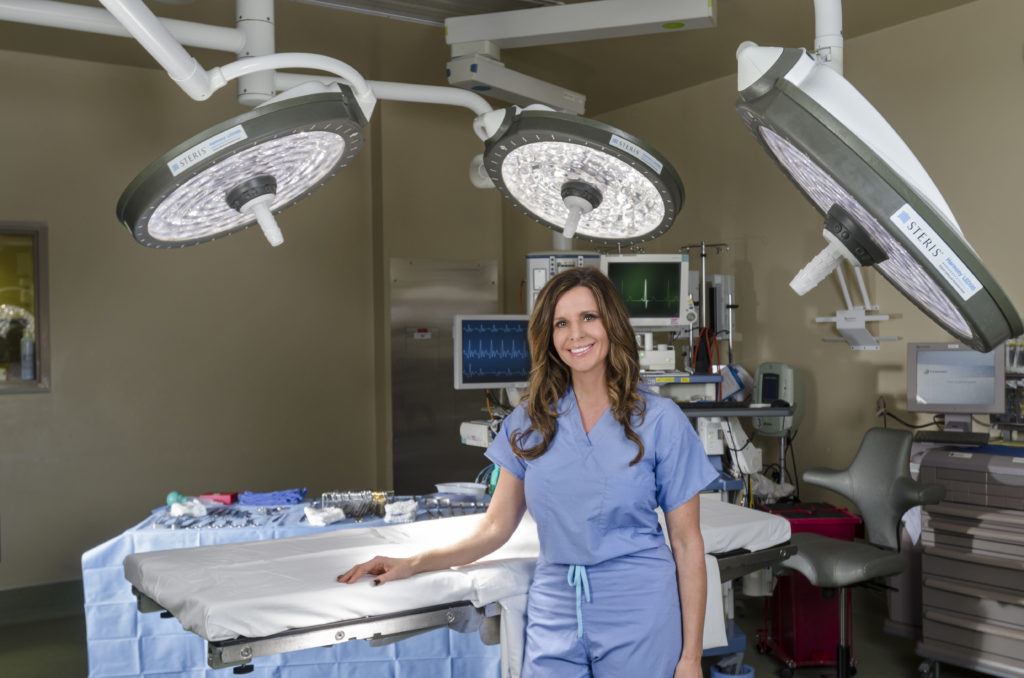Hysterectomy in Cincinnati, Ohio
Surgical Removal of the Uterus.
Hysterectomy is the surgical removal of the uterus. This is a way of treating problems that affect the uterus. Many conditions can be cured with hysterectomy. Because it is major surgery, you may want to explore other treatment options first. For conditions that have not responded to other treatments, a hysterectomy in Cincinnati may be the best choice.
You're in Good Hands.
Each year hundreds of thousands of women are told they must have a hysterectomy; in Cincinnati alone, this number is in the hundreds! This information can be very overwhelming, leaving a woman feeling scared and confused if it is the right decision to proceed with surgery. A total hysterectomy means that the uterus and cervix are removed. In some cases, the tubes and ovaries are removed along with the uterus and cervix. This is called Total Hysterectomy with Bilateral salpingo-oophorectomy. In a Supracervical Hysterectomy, only the uterus (not the cervix) is removed.

The Procedure
Details.
What it Treats
Abnormal uterine bleeding (vaginal bleeding)
Cancer
Cervical dysplasia (pre-cancerous cervix condition)
Endometriosis
Uterine fibroids
Uterine prolapse (pelvic relaxation)
Pelvic Pain
Genes (BRCA-1, BRCA-2) that increase the risk of cancer
Transgender patients (female to male)
Recovery Time
2-6 weeks
Advances in Surgical Technology
With advances in surgical technology, there are now several surgical options for hysterectomies. There are many factors that determine what kind of hysterectomy you can actually undergo and which one the surgeon recommends.

Our surgeons make an incision near the top of the vagina. They reach through the incision to disconnect the blood vessels & attachments of the uterus.
Once the uterus is free, it is removed through the vagina. A vaginal hysterectomy in Cincinnati is a common procedure for patients to receive.
Return to vaginal hysterectomy ^A laparoscope is used to guide the surgery. A laparoscope is a thin, lighted tube with a camera that’s inserted into the abdomen through a small incision in or around the navel. It allows the surgeon to see pelvic organs on a screen. Additional small incisions are made in the abdomen for other instruments used in the surgery. The uterus is detached from inside the body. It then is removed in small pieces through the incisions, or the pieces are passed out of the body through the vagina.
Return to laparoscopic hysterectomy ^The surgeon controls the daVinci, often called a “robot” to remove the uterus through just a few tiny openings. The daVinci translates the surgeon’s hand movements into these small instruments inside your body. The robot cannot act on its own. The daVinci Surgical System provides high-definition 3D vision and a magnified view of the pelvis. The benefits of this technology are less pain, less blood loss, less risk of infection, quick recovery and small incisions.
Return to Davinci Robotic-Assisted Hysterectomy ^Our surgeons do not perform this invasive procedure except in rare circumstances. Traditionally abdominal hysterectomies are performed through a large incision on the abdominal skin in order to free up the attachments of the uterus and then the uterus is lifted out of the body. For obvious reasons, this procedure can be painful and have a higher risk of blood loss, infection and a longer recovery (often 6 weeks).
Return to Abdominal Hysterectomy ^Process & Results
Hysterectomy
Step 1.
Initial Consultation
Your initial consultation for hysterectomy in Cincinnati will be with one of our gynecology providers for a thorough look into your past medical and surgical history, family history, and current medications, with specific attention paid to the symptoms you are struggling with.
We will review any prior tests or treatments you have received so if you have had a prior ultrasound, recent pap smear, surgery or endometrial biopsy, please bring those records/results to your initial consultation. A pelvic exam is usually performed at this initial consultation.
Step 2.
Testing
Next, we may schedule other tests to further look into the reason you may be considering a hysterectomy. Some of these tests may include a pap smear, blood tests, genetic testing, ultrasound and/or endometrial biopsy.
Step 3.
Review Testing
Depending on the testing that was ordered/scheduled, one of our gynecologic surgeons will review all your testing and discuss the appropriate next steps and the route and type of hysterectomy that would be best suited for you. We will also discuss the pros and cons of whether the ovaries should be removed at the time of the hysterectomy.
Step 4.
Schedule the Hysterectomy
If a hysterectomy is right for you, our surgery scheduler will contact your insurance company for insurance prior authorization and approval. She will contact you with insurance details and schedule the hysterectomy in Cincinnati. Our scheduler will inform you of the logistics of having a hysterectomy.
Step 5.
Day of Procedure
On the day of your scheduled hysterectomy in Cincinnati, you will arrive at the hospital a few hours before the scheduled time to meet with the anesthesia team, get an IV, receive preoperative medications and sign any paper work that is required. Your gyn surgeon will meet with you before to answer any last minute questions you may have. For most patients, the actual hysterectomy procedure takes 1-2 hours. Some patients elect to spend the night in the hospital; other patients may meet criteria for early discharge on the same day as the surgery.
Step 6.
Post Operative
Our surgeons will see you back in the office for a postoperative visit 1-2 weeks after surgery. At this time, the pathology (biopsy) reports are reviewed and ensure your recovery is going as expected.
HealthiHer™ Podcast
#58 Everything you Need to Know about Hysterectomies

Having a hysterectomy is big decision. Learn more from two expert gynecological surgeons. Continued…
Schedule a Consultation
It's simple— identify the problem areas of your body and we will recommend the right treatment plan for you.


